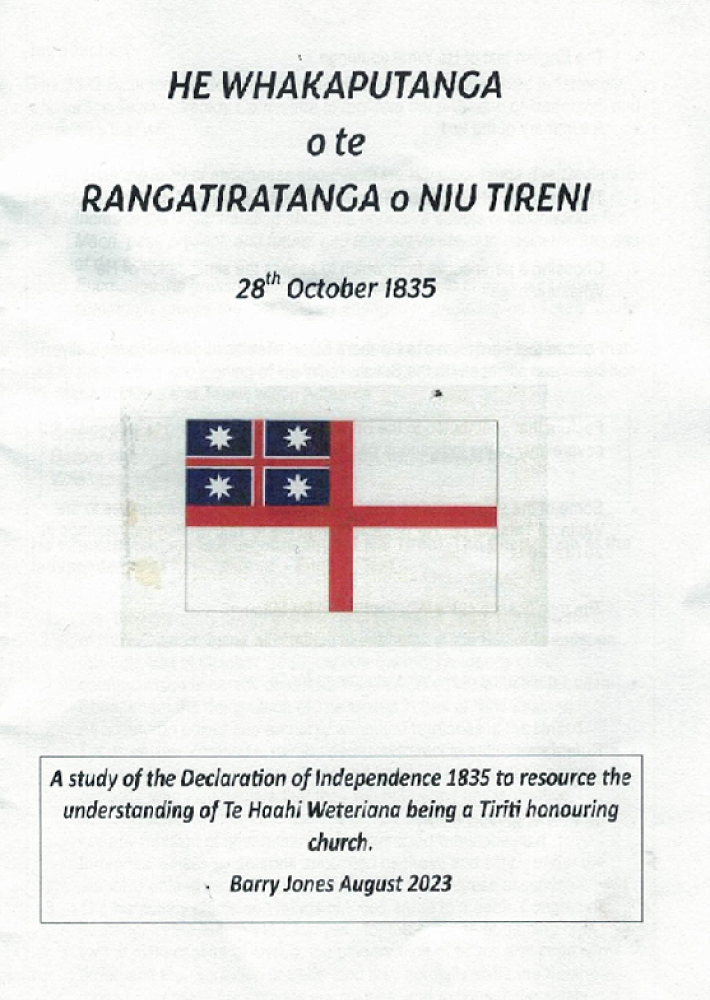
The Declaration of Independence 1835
A study guide review
Title:
He Whakaputanga o te Rangatiratanga o Niu Tireni
28 October 1835
A study guide
Author: Barry Jones
Reviewer: John Roberts
Available: info@methodist.org.nz $3.30 posted
He Whakaputanga is a significant document in the history of our nation. This nine-page study booklet is a response to a call from the 2022 Bicentennial Conference of Te Hahi Weteriana to raise the level of awareness and understanding of He Whakaputanga amongst Tauiwi within the Methodist Church.
Following the conference Barry Jones worked on a study guide and shared the initial draft with Rev Dr Arapera Ngaha of Te Taha Māori who was affirming of its contents. The September 2023 meeting of the Tauiwi Strategy Committee received the study and then endorsed it for use throughout the Tauiwi section of the church.
The study begins with a copy of the English text of the Declaration followed by a summary highlighting its main points. The following six sections deal with different aspects of the Declaration.
The first relates to the British Government’s (the Crown’s) response to the signing of the Declaration. The second discusses the need to choose a perspective for assessing its significance for our time.
A third section explores factors that contributed to Northern Māori seeking to develop a mutually beneficial alliance with the British. These include: concerns about French territorial interests in the Pacific; the need to curb European lawlessness in Aotearoa; and protecting Māori international shipping rights.
The fourth section looks at factors that contributed to the British Crown wanting to recognise the sovereignty of Māori, including: maintaining law and order in Aotearoa New Zealand; and protecting British interests in Aotearoa New Zealand.
The fifth section considers some of the submissions made by Māori claimants and expert witnesses to the Waitangi Tribunal hearing on He Whakaputanga and contained in the Tribunal’s report of 2014. The final section further explores the significance of the Declaration, especially for Tauiwi.
Each of these sections of the study concludes with a question for discussion.
Barry Jones is to be commended for putting together this study guide.
Now 188 years after its signing, it is over to us to take up the challenge of becoming familiar with the Declaration and being open to its significance for today. And not just in our church, but also in the wider society of Aotearoa New Zealand. This is especially important at a time when the Declaration of Independence and the Treaty of Waitangi signed five years after the Declaration, are under threat of being abandoned or rewritten by some of our politicians.
Use this study as part your Waitangi Day celebrations.
